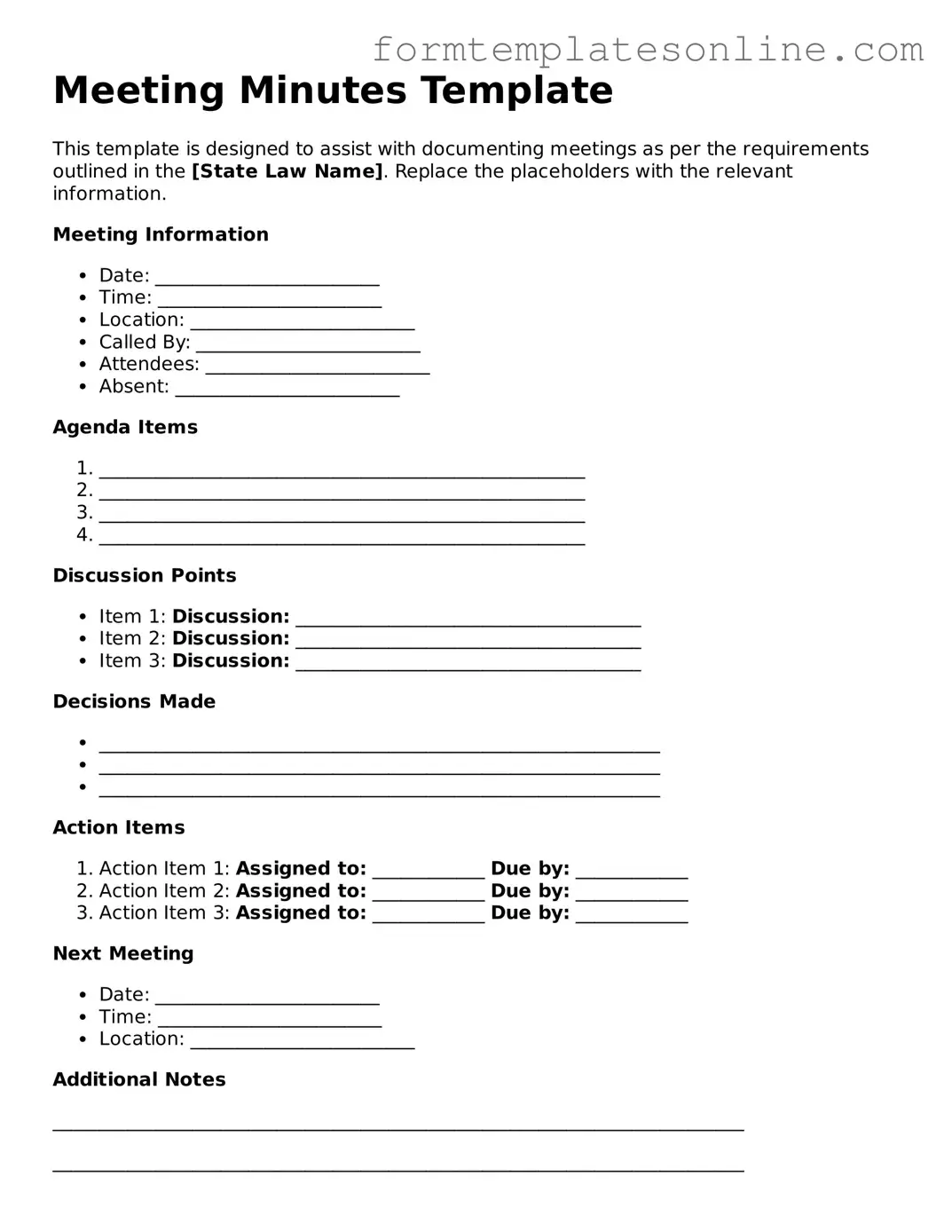What is the purpose of the Meeting Minutes form?
The Meeting Minutes form serves to document the key discussions, decisions, and action items from a meeting. It provides a record that can be referenced later, ensuring that all participants have a clear understanding of what occurred during the meeting.
Who is responsible for completing the Meeting Minutes form?
The responsibility for completing the Meeting Minutes form typically falls to the designated secretary or note-taker of the meeting. This individual should capture the main points discussed, decisions made, and any assigned tasks.
What information should be included in the Meeting Minutes form?
Essential information includes the date and time of the meeting, the names of attendees, a summary of discussions, any decisions made, and action items with assigned responsibilities. It is important to be clear and concise while ensuring that all relevant details are captured.
How soon should the Meeting Minutes be distributed after the meeting?
Meeting Minutes should ideally be distributed within a few days following the meeting. This allows participants to review the notes while the discussions are still fresh in their minds, and it ensures that action items can be addressed promptly.
Can the Meeting Minutes be edited after they are distributed?
Once the Meeting Minutes are distributed, they can be edited if necessary. However, any changes should be documented and communicated to all participants to maintain transparency. It is important to ensure that the final version accurately reflects the meeting's discussions.
Is there a specific format that the Meeting Minutes should follow?
While there is no universally required format, a clear and organized structure is recommended. Common sections include the meeting title, date and time, attendees, agenda items, discussions, decisions, and action items. Consistency in formatting helps in readability and reference.
How should action items be recorded in the Meeting Minutes?
Action items should be clearly listed, specifying the task, the person responsible, and any deadlines. This clarity helps ensure accountability and allows participants to track progress on assigned tasks effectively.
What should be done if someone disagrees with the Meeting Minutes?
If a participant disagrees with the content of the Meeting Minutes, they should communicate their concerns to the person responsible for taking the minutes. It is advisable to address any discrepancies before finalizing the document, ensuring an accurate record of the meeting.
Are Meeting Minutes considered official records?
Yes, Meeting Minutes are typically considered official records of the proceedings. They may be used for reference in future meetings, audits, or legal matters. Maintaining accurate and thorough minutes is important for organizational transparency and accountability.
